#colonial
Text
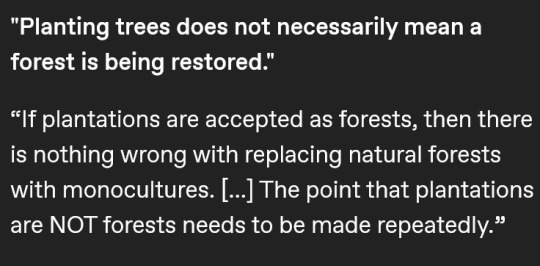
Despite its green image, Ireland has surprisingly little forest. [...] [M]ore than 80% of the island of Ireland was [once] covered in trees. [...] [O]f that 11% of the Republic of Ireland that is [now] forested, the vast majority (9% of the country) is planted with [non-native] spruces like the Sitka spruce [in commercial plantations], a fast growing conifer originally from Alaska which can be harvested after just 15 years. Just 2% of Ireland is covered with native broadleaf trees.
Text by: Martha O’Hagan Luff. “Ireland has lost almost all of its native forests - here’s how to bring them back.” The Conversation. 24 February 2023. [Emphasis added.]
---
[I]ndustrial [...] oil palm plantations [...] have proliferated in tropical regions in many parts of the world, often built at the expense of mangrove and humid forest lands, with the aim to transform them from 'worthless swamp' to agro-industrial complexes [...]. Another clear case [...] comes from the southernmost area in the Colombian Pacific [...]. Here, since the early 1980s, the forest has been destroyed and communities displaced to give way to oil palm plantations. Inexistent in the 1970s, by the mid-1990s they had expanded to over 30,000 hectares. The monotony of the plantation - row after row of palm as far as you can see, a green desert of sorts - replaced the diverse, heterogenous and entangled world of forest and communities.
Text by: Arturo Escobar. "Thinking-Feeling with the Earth: Territorial Struggles and the Ontological Dimension of the Epistemologies of the South." Revista de Antropologia Iberoamericana Volume 11 Issue 1. 2016. [Emphasis added.]
---
But efforts to increase global tree cover to limit climate change have skewed towards erecting plantations of fast-growing trees [...] [because] planting trees can demonstrate results a lot quicker than natural forest restoration. [...] [But] ill-advised tree planting can unleash invasive species [...]. [In India] [t]o maximize how much timber these forests yielded, British foresters planted pines from Europe and North America in extensive plantations in the Himalayan region [...] and introduced acacia trees from Australia [...]. One of these species, wattle (Acacia mearnsii) [...] was planted in [...] the Western Ghats. This area is what scientists all a biodiversity hotspot – a globally rare ecosystem replete with species. Wattle has since become invasive and taken over much of the region’s mountainous grasslands. Similarly, pine has spread over much of the Himalayas and displaced native oak trees while teak has replaced sal, a native hardwood, in central India. Both oak and sal are valued for [...] fertiliser, medicine and oil. Their loss [...] impoverished many [local and Indigenous people]. [...]
India’s national forest policy [...] aims for trees on 33% of the country’s area. Schemes under this policy include plantations consisting of a single species such as eucalyptus or bamboo which grow fast and can increase tree cover quickly, demonstrating success according to this dubious measure. Sometimes these trees are planted in grasslands and other ecosystems where tree cover is naturally low. [...] The success of forest restoration efforts cannot be measured by tree cover alone. The Indian government’s definition of “forest” still encompasses plantations of a single tree species, orchards and even bamboo, which actually belongs to the grass family. This means that biennial forest surveys cannot quantify how much natural forest has been restored, or convey the consequences of displacing native trees with competitive plantation species or identify if these exotic trees have invaded natural grasslands which have then been falsely recorded as restored forests. [...] Planting trees does not necessarily mean a forest is being restored. And reviving ecosystems in which trees are scarce is important too.
Text by: Dhanapal Govindarajulu. "India was a tree planting laboratory for 200 years - here are the results." The Conversation. 10 August 2023. [Emphasis added.]
---
Nations and companies are competing to appropriate the last piece of available “untapped” forest that can provide the most amount of “environmental services.” [...] When British Empire forestry was first established as a disciplinary practice in India, [...] it proscribed private interests and initiated a new system of forest management based on a logic of utilitarian [extraction] [...]. Rather than the actual survival of plants or animals, the goal of this forestry was focused on preventing the exhaustion of resource extraction. [...]
Text by: Daniel Fernandez and Alon Schwabe. "The Offsetted." e-flux Architecture (Positions). November 2013. [Emphasis added.]
---
At first glance, the statistics tell a hopeful story: Chile’s forests are expanding. […] On the ground, however, a different scene plays out: monocultures have replaced diverse natural forests [...]. At the crux of these [...] narratives is the definition of a single word: “forest.” [...] Pinochet’s wave of [...] [laws] included Forest Ordinance 701, passed in 1974, which subsidized the expansion of tree plantations [...] and gave the National Forestry Corporation control of Mapuche lands. This law set in motion an enormous expansion in fiber-farms, which are vast expanses of monoculture plantations Pinus radiata and Eucalyptus species grown for paper manufacturing and timber. [T]hese new plantations replaced native forests […]. According to a recent study in Landscape and Urban Planning, timber plantations expanded by a factor of ten from 1975 to 2007, and now occupy 43 percent of the South-central Chilean landscape. [...] While the confusion surrounding the definition of “forest” may appear to be an issue of semantics, Dr. Francis Putz [...] warns otherwise in a recent review published in Biotropica. […] Monoculture plantations are optimized for a single product, whereas native forests offer [...] water regulation, hosting biodiversity, and building soil fertility. [...][A]ccording to Putz, the distinction between plantations and native forests needs to be made clear. “[...] [A]nd the point that plantations are NOT forests needs to be made repeatedly [...]."
Text by: Julian Moll-Rocek. “When forests aren’t really forests: the high cost of Chile’s tree plantations.” Mongabay. 18 August 2014. [Emphasis added.]
2K notes
·
View notes
Text

386 notes
·
View notes
Text
Many Israeli locations are built on top of Palestinian graves. Take Tantura for example or the village of Dar Yaseen where the Nakba started.
Colonizers love to destroy people's links to their lands. Palestinians are not safe from Zionist Israel not even in their death. They displace their bodies even when they die.
Will you accept this for where your loved ones are buried? No? Do something, say something.

#free palestine#gaza#israel#free gaza#palestine#fuck the idf#antisemitism#jerusalem#current events#palestine news#genocide#colonial
129 notes
·
View notes
Text

The 'Wisteria Porch' of Georgian Colonial design, was added to Endean, the Charles Summer Bird estate, at the turn of the century. It stretches 80 feet across the front of the mansion and is framed by a canopy of wisteria.
Interior Visions: Great American Designers and the Showcase House, 1988
#vintage#vintage interior#1980s#80s#interior design#home decor#wisteria#porch#Georgian#Colonial#wicker#set#chaise#sisal rug#floral#chintz#mansion#Charles Sumner Bird#birdcage#outdoor living
173 notes
·
View notes
Text

70 notes
·
View notes
Text
Happy September 🍂

It feels as though an eternity has passed since my last post.. I'm overjoyed to announce that after a very long search, I've finally found a place where my heart can rest and my soul can thrive. Last week we closed on a c. 1800 antique colonial lovingly preserved in idyllic mid-coast Maine amidst picturesque mountain views, forests, and wildflower fields. We even have a small, centuries-old apple orchard to explore and care for 🥹
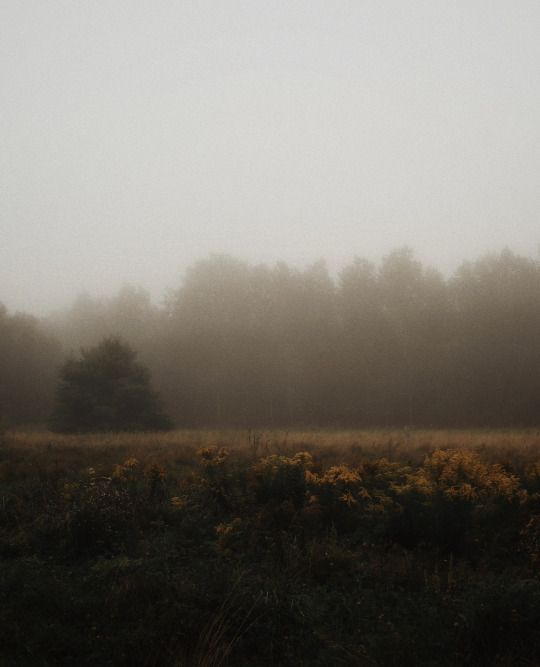
From the moment I arrived, I knew I had discovered my sanctuary 🕯️ Antique homes have always held a special place in my soul and now I find myself living out the dream that has danced in my imagination for years.
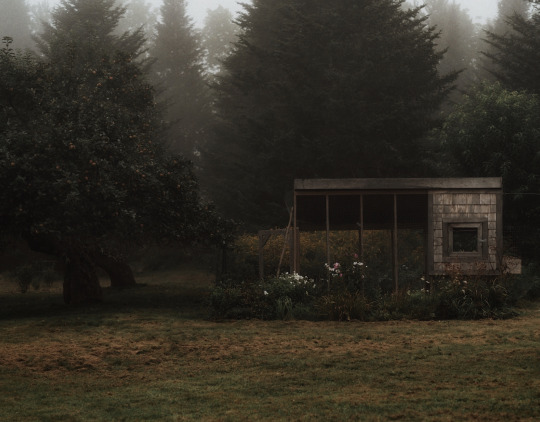
There’s a sense of timelessness that lingers in the air.. The walls adorned with stories of days long gone. The wavy panes of the window glass, gently distorting the world beyond. The large fireplaces bearing witness to the warmth and laughter that once graced these rooms. The worn wide wood floors, aged with a beautiful patina — a testament to centuries of lives and dreams that have unfolded here.
Every crack and creak an invitation to embrace the imperfections of life.

I can't begin to express the depth of gratitude that fills my heart as I embark on this new chapter. I’m excited to share with you the beauty that surrounds me in this special place, and I’m eager to dive back into photography and the studio — to paint and create once again.
This week, we began clearing out what will soon become my art studio, housed in the barn converted workshop that was built c. 1800 and is situated just beyond a majestic weeping willow.
To those who have stuck with me throughout this journey, your support means the world to me, and I am forever grateful for your continued encouragement.
So here we are, at the beginning of a new chapter. This is my return, and I can't wait to share more with you 🤎
Instagram — @melvolkman
#autumn#fall#September#happy september#cozy#cottagecore#autumn aesthetic#moon autumn magic#melvolkman#antique#vintage#antique house#colonial#colonial home#New England#Maine#downeast#autumn 2023
147 notes
·
View notes
Text

140 notes
·
View notes
Text
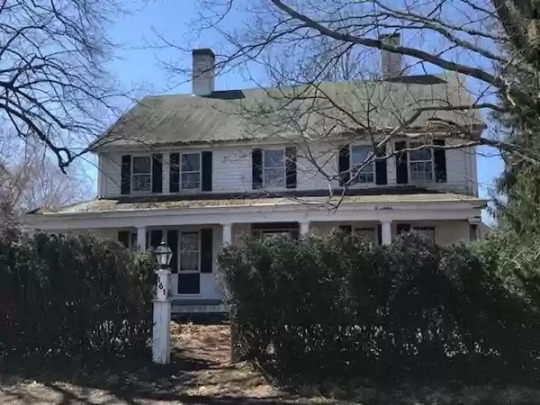
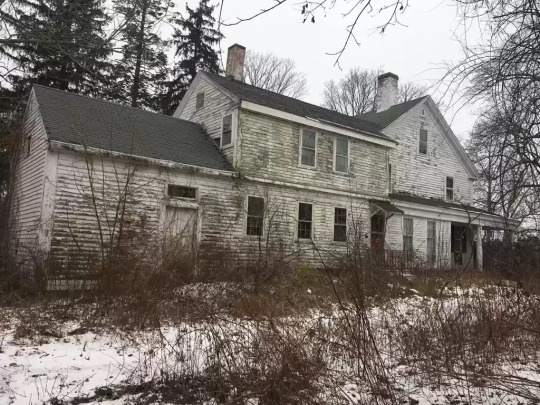
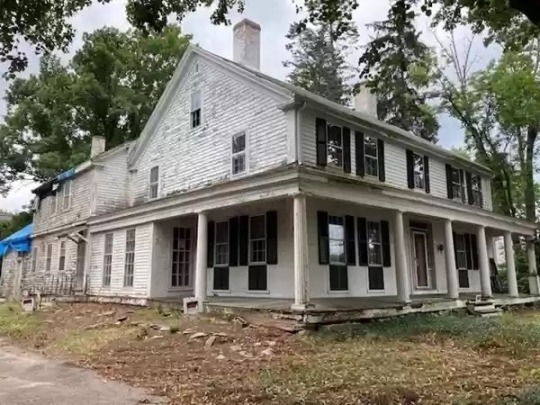

West Bridgewater, Massachusetts
built in 1740
93 notes
·
View notes
Text
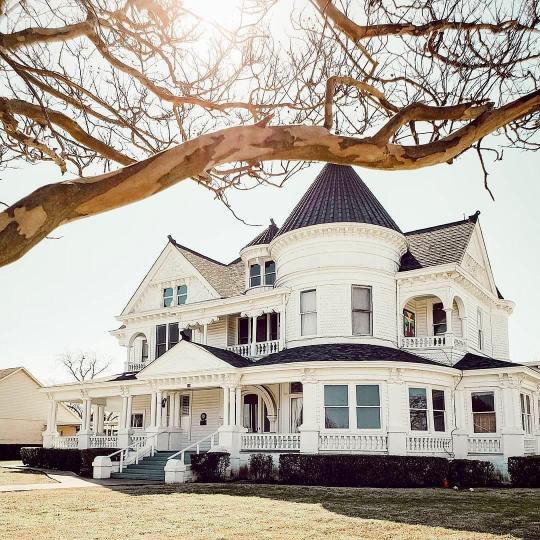
This gorgeous house
📍Bonham, Texas 🇺🇸
📸: @lambertcottage
#dark academia#light academia#classical#academia aesthetic#escapism#academia#books and libraries#classic literature#books#architecture#building#house#exterior#design#colonial#beautiful#place#travel#royal core#cottage core#aesthetic#academic#mood#vibe#tumblr
46 notes
·
View notes
Text

"La Martiniquaise", early to mid 19th century
20 notes
·
View notes
Text

.they're gay your honor



.these were because of @gammanullzero .
#.im so sorry to everybody. i love them#inscryption#lonely wizard#all tomorrows#colonial#i literally have no excuse for this mentally ill of a pair#my art
120 notes
·
View notes
Text
In fact, far more Asian workers moved to the Americas in the 19th century to make sugar than to build the transcontinental railroad [...]. [T]housands of Chinese migrants were recruited to work [...] on Louisiana’s sugar plantations after the Civil War. [...] Recruited and reviled as "coolies," their presence in sugar production helped justify racial exclusion after the abolition of slavery.
In places where sugar cane is grown, such as Mauritius, Fiji, Hawaii, Guyana, Trinidad and Suriname, there is usually a sizable population of Asians who can trace their ancestry to India, China, Japan, Korea, the Philippines, Indonesia and elsewhere. They are descendants of sugar plantation workers, whose migration and labor embodied the limitations and contradictions of chattel slavery’s slow death in the 19th century. [...]
---
Mass consumption of sugar in industrializing Europe and North America rested on mass production of sugar by enslaved Africans in the colonies. The whip, the market, and the law institutionalized slavery across the Americas, including in the U.S. When the Haitian Revolution erupted in 1791 and Napoleon Bonaparte’s mission to reclaim Saint-Domingue, France’s most prized colony, failed, slaveholding regimes around the world grew alarmed. In response to a series of slave rebellions in its own sugar colonies, especially in Jamaica, the British Empire formally abolished slavery in the 1830s. British emancipation included a payment of £20 million to slave owners, an immense sum of money that British taxpayers made loan payments on until 2015.
Importing indentured labor from Asia emerged as a potential way to maintain the British Empire’s sugar plantation system.
In 1838 John Gladstone, father of future prime minister William E. Gladstone, arranged for the shipment of 396 South Asian workers, bound to five years of indentured labor, to his sugar estates in British Guiana. The experiment with “Gladstone coolies,” as those workers came to be known, inaugurated [...] “a new system of [...] [indentured servitude],” which would endure for nearly a century. [...]
---
Bonaparte [...] agreed to sell France's claims [...] to the U.S. [...] in 1803, in [...] the Louisiana Purchase. Plantation owners who escaped Saint-Domingue [Haiti] with their enslaved workers helped establish a booming sugar industry in southern Louisiana. On huge plantations surrounding New Orleans, home of the largest slave market in the antebellum South, sugar production took off in the first half of the 19th century. By 1853, Louisiana was producing nearly 25% of all exportable sugar in the world. [...] On the eve of the Civil War, Louisiana’s sugar industry was valued at US$200 million. More than half of that figure represented the valuation of the ownership of human beings – Black people who did the backbreaking labor [...]. By the war’s end, approximately $193 million of the sugar industry’s prewar value had vanished.
Desperate to regain power and authority after the war, Louisiana’s wealthiest planters studied and learned from their Caribbean counterparts. They, too, looked to Asian workers for their salvation, fantasizing that so-called “coolies” [...].
Thousands of Chinese workers landed in Louisiana between 1866 and 1870, recruited from the Caribbean, China and California. Bound to multiyear contracts, they symbolized Louisiana planters’ racial hope [...].
To great fanfare, Louisiana’s wealthiest planters spent thousands of dollars to recruit gangs of Chinese workers. When 140 Chinese laborers arrived on Millaudon plantation near New Orleans on July 4, 1870, at a cost of about $10,000 in recruitment fees, the New Orleans Times reported that they were “young, athletic, intelligent, sober and cleanly” and superior to “the vast majority of our African population.” [...] But [...] [w]hen they heard that other workers earned more, they demanded the same. When planters refused, they ran away. The Chinese recruits, the Planters’ Banner observed in 1871, were “fond of changing about, run away worse than [Black people], and … leave as soon as anybody offers them higher wages.”
When Congress debated excluding the Chinese from the United States in 1882, Rep. Horace F. Page of California argued that the United States could not allow the entry of “millions of cooly slaves and serfs.” That racial reasoning would justify a long series of anti-Asian laws and policies on immigration and naturalization for nearly a century.
---
All text above by: Moon-Ho Jung. "Making sugar, making 'coolies': Chinese laborers toiled alongside Black workers on 19th-century Louisiana plantations". The Conversation. 13 January 2022. [All bold emphasis and some paragraph breaks/contractions added by me.]
456 notes
·
View notes
Text

IG thibaut_1886
51 notes
·
View notes
Text
“Like the Christians’ Eve, the Iroquois Sky-Woman had an insatiable desire to satisfy her hunger. At first she sought her husband’s guidance, but in time she struck out on her own. Her curiosity brought her to the sacred tree at the center of the Sky-World--a place where, as she soon discovered, the floor of the sky was very thin. Losing her footing, she slipped through a hole at the tree’s base and fell headlong ‘toward the great ocean far below.’
…Like her Iroquois descendants in North America, this first fallen Sky-Woman farmed the rich earths she created, gathered its fruits, and built a hut upon it to live in. After a time, her pregnancy ran its course and, legend says, she ‘was delivered of a daughter.’ The girl and her mother continued to look after their lands till one day, ‘when the girl had grown to womanhood,’ a man appeared. He stayed only briefly--just long enough to impregnate Sky-Woman’s daughter. When her time to deliver arrived she, like many women during the premodern period, died while giving birth. Her offspring survived: two boys who would come to rule the earth their mother and grandmother had made.
…Every native group had its own account of the world’s beginnings. For the Pueblo of the Southwest, human life began underneath the earth when a woman named Tsichtinako (Thought Woman) nursed two sisters: Iatikyu, the Mother of the Corn clan, and Nautsiti, the Mother of the Sun clan. The Ottawa, an Algonquian-speaking people living in the northern Great Lakes region, traced their origins to a male figure called the Great Hare and his younger brother.
…To the Protestants of New England, the followers of the teachings of the Swiss theologian John Calvin, the devotional practices of the Catholics in New France and the Spanish colonies seemed as alien as those of the Narragansets and Wampanoags who lived among them in Massachusetts and Rhode Island. In turn, the faithful in Virginia and Maryland, who followed the orthodox traditions of the Church of England, considered New England’s Puritans to be overzealous reformers.
…Even in the most physical, tangible sense religion was a constant presence. From the stark clapboard spires that capped New England’s Congregational meeting houses, to the sturdy brick of Virginia’s Anglican churches, to the poles marking the underground kivas in which the Pueblo held sacred rituals, places of worship dotted the landscape. Each and every day, the English villages lining the eastern seaboard would have been alive with the sound of church bells.
…Every part of colonial America had its own rhythms of religious devotion--rhythms that helped women and men make sense of their lives. But nowhere did religion play a greater role than it did in early New England. Almost without exception, the leaders of Massachusetts, Plymouth, Connecticut, New Haven, New Hampshire, and Rhode Island were dissenters from the Church of England.
…No matter whether they enthusiastically supported or dared to question the Puritan mission, all law-abiding New Englanders gathered in their local meetinghouses every Sunday, and often once during the week as well, to hear their preacher expound upon scripture. One perennially popular sermon topic was the nature of women. Between 1668 and 1735, women’s lives were the subject of no fewer than 75 printed treatises. Some of these tracts were funeral sermons that eulogized an especially pious female parishioner; others were more general “how-to” homilies dealing with marriage or mothering.
…Pious women were praised by ministers and neighbors alike. If they resembled any Old Testament figure, it was the industrious Bathsheba (the ‘virtuous woman’ described in Proverbs 31:10-31) rather than the perfidious Eve. Where Eve tempted, persuaded, and seduced, Bathsheba planted, prayed, and spun. Her every word testified to a womanly brand of piety: faith tempered with respectful submission. More than one New England minister echoed these verses from Proverbs, exalting the woman who ‘openeth her mouth with wisdom…in her tongue is the law of kindness.’ As the biblical passage suggested, such well-spoken women were indeed more priceless than rubies.
…In fact, New England’s ‘virtuous women’ may have been even more devoted to religious practice than their husbands and fathers. At the very least they were more dedicated churchgoers. At first, men and women joined the churches in equal numbers. Within a generation, however, women outnumbered men in many if not most of the churches in Massachusetts and Connecticut. By the mid-1700s, women comprised nearly three-quarters of many congregations.
…One of the more radical groups in the entire spectrum of dissenting English Protestantism, the Quakers granted female believers an extraordinary degree of autonomy and equality. …Converts of both sexes were encouraged to preach about their religious experiences, and one of the movement’s early and most prominent leaders was an English wife and mother, Margaret Fell. …Where Quaker women were concerned, Massachusetts authorities made the links between female preaching, rejecting ministers’ teachings, and worshiping the devil even more explicit.
…Black women and men brought a very different set of religious beliefs to the southern colonies. Their traditions concerning the supernatural were as diverse as the many African peoples from which they came. There were, however, important common threads; most West Africans believed in more than one God and made the veneration of ancestors an important part of their worship ceremonies.
…Until the 1730s, southern whites made little effort to convert their slaves to Christianity. But in the late 18th century, evangelical sects such as the Methodists and the Baptists appealed to blacks and poor whites alike. …Call-and-response hymn singing and joyful shouting are examples of African forms that influenced the style of worship practiced by both whites and blacks in many southern denominations.”
Jane Kamensky, “Daughters of Eve, Daughters of Zion: Women and Religion” in The Colonial Mosaic: American Women, 1600-1760
#colonialism#colonial#american#indigenous#history#religion#gender#christian#jane kamensky#the colonial mosaic
20 notes
·
View notes
Text
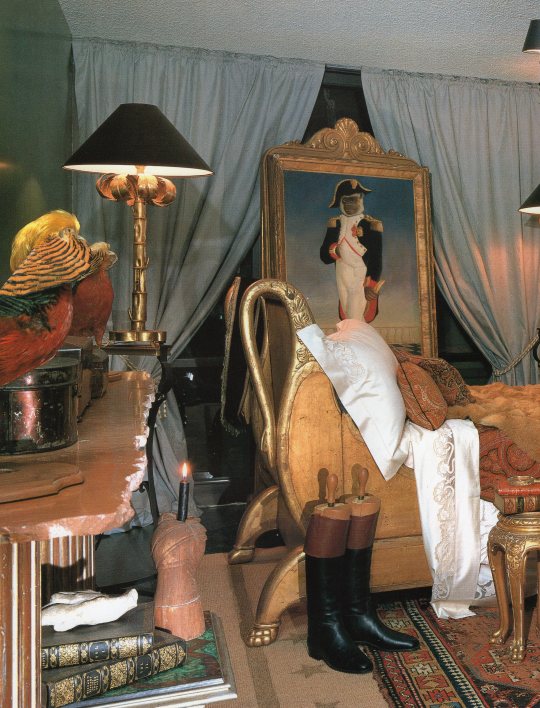
Interior Visions: Great American Designers and the Showcase House, 1988
#vintage#vintage interior#1980s#80s#interior design#home decor#bedroom#swan#sleigh bed#monkey#portrait#books#taxidermy#French#Empire#Colonial#Napoleon#style#home#architecture
144 notes
·
View notes
Photo










Journeys End - (Another Colonial Build) - This one is very CC heavy.
CC --- Creators Are >>> Floors By @tatschu, Fences --- Medieval CC by @zx-ta, @lady-moriel, @simverses, @thesensemedieval, @satterlly --- Rugs by @zozothebrit --- Historical CC By @anarchosims - Loose Interior and exterior Décor CC By @pierisim, @felixandresims, @strangestorytellersims, @thejim07, @stereo-91, and @lilis-palace. (Beach wallpaper by @k-hippie, and Floors By @tatschu) (Windows & Doors by @lilis-palace) Window Shutter by @zx-ta.
Available for download in my gallery if anyone is interested. Any problems downloading just message me and I will try to help.
#colonial beach#colonial#british colonial#historical#historical sims#caribbean#architecture#mansion#house#sims4#the sims 4#sims 4#sims 4 cc
154 notes
·
View notes